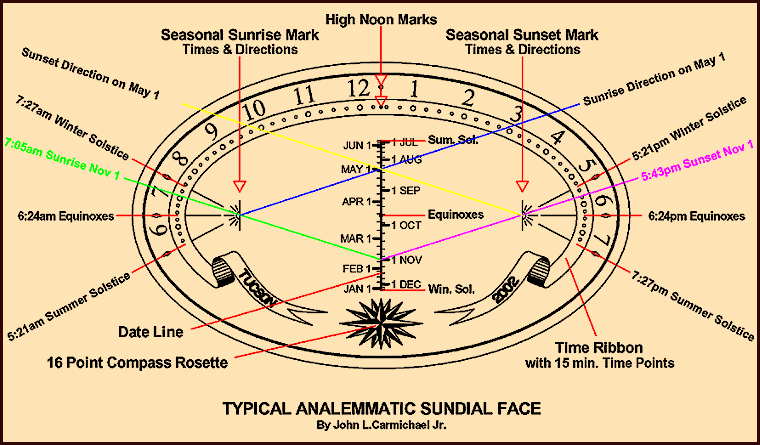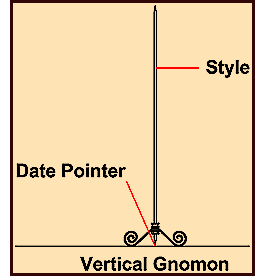Analemmatic Sundial Functions

To Tell Watch Time
Place the pointer at the bottom of the gnomon above the current date on the Date Line. Read sundial time to the nearest Time Point where the gnomon's shadow crosses the Time Ribbon. Correct Sundial Time for The Equation of Time.

To Tell Solar Azimuth (Direction)
Place the bottom of the Date Pointer of the Gnomon over the center of the Compass Rossette. Note the shadow's direction. The sun is in the opposite direction.
To Tell High Noon
Note when the gnomon's shadow touches the High Noon Mark.
To Tell the Time of Sunrise for Any Date (see example for November 1):
Stretch a string or draw a mental line from any date on the Date Line through the Seasonal Sunrise Mark to the edge of the sundial. Note the time of the nearest Time Point where the string crosses the Time Ribbon. See green line. Correct for the Equation of Time.
To Tell the Time of Sunset for Any Date: See example for November 1.
Stretch a string or draw a mental line from any date on the Date Line through the Seasonal Sunset Mark to the edge of the sundial. Note the time of the nearest Time Point where the string crosses the Time Ribbon. See purple line. Correct for the Equation of Time.
To See Where the Sun Rises
Stretch a string or draw a mental line from the Seasonal Sunrise Mark to the desired date on the Date Line. See blue line.
To See Where the Sun Sets
Stretch a string or draw a mental line from the Seasonal Sunset Mark to the desired date on the Date Line. See yellow line.
Note: You cannot tell time on analemmatic sundials using moonshadows.